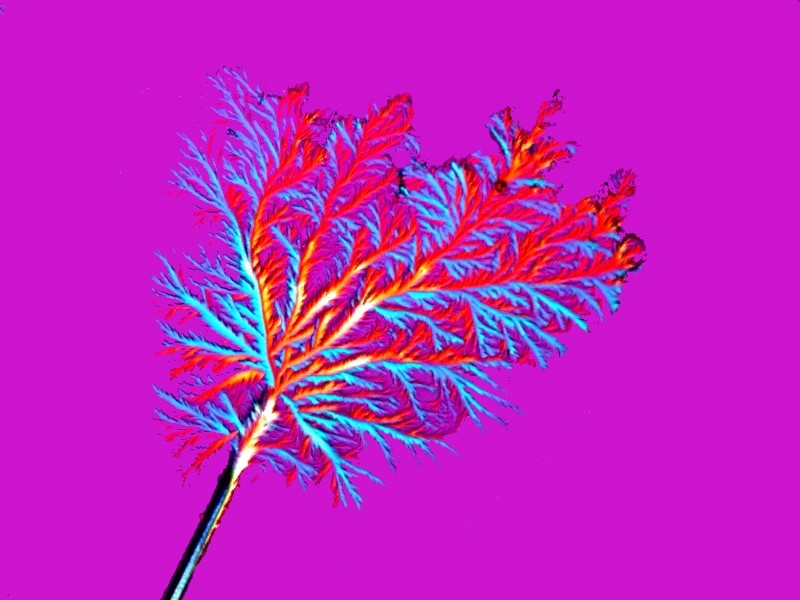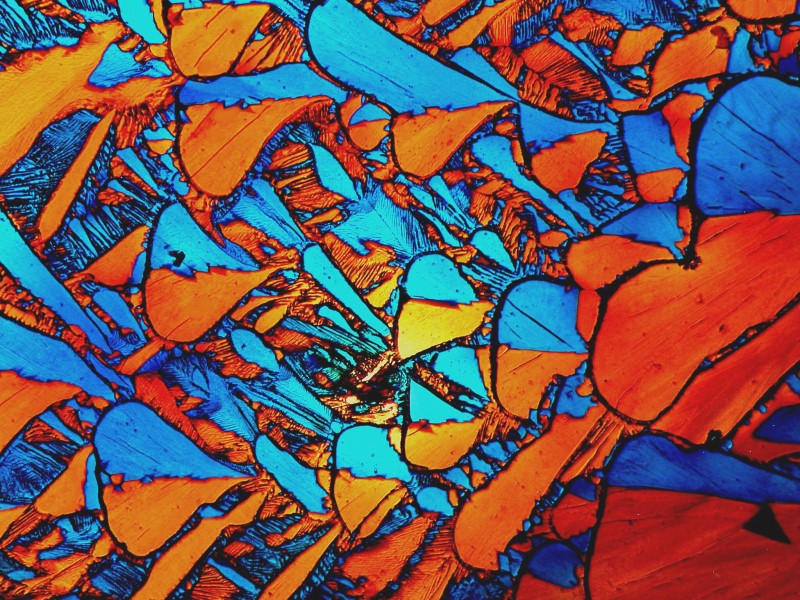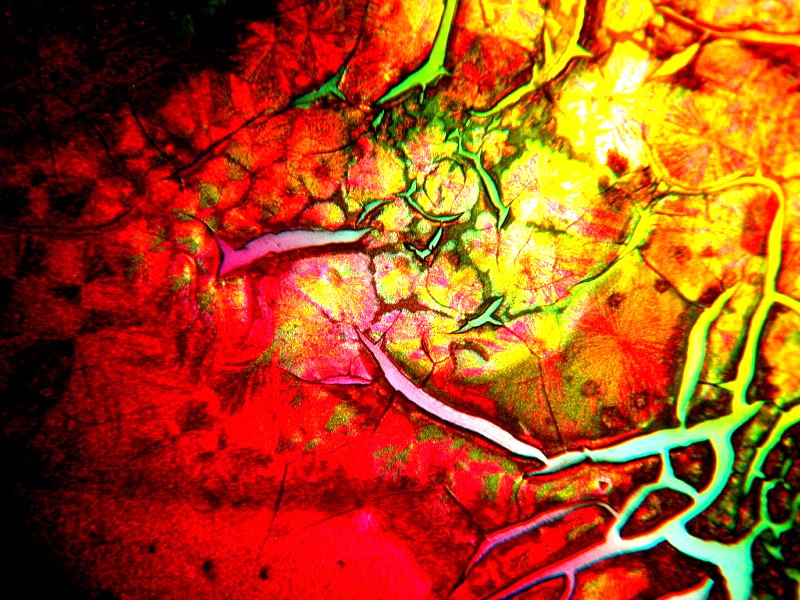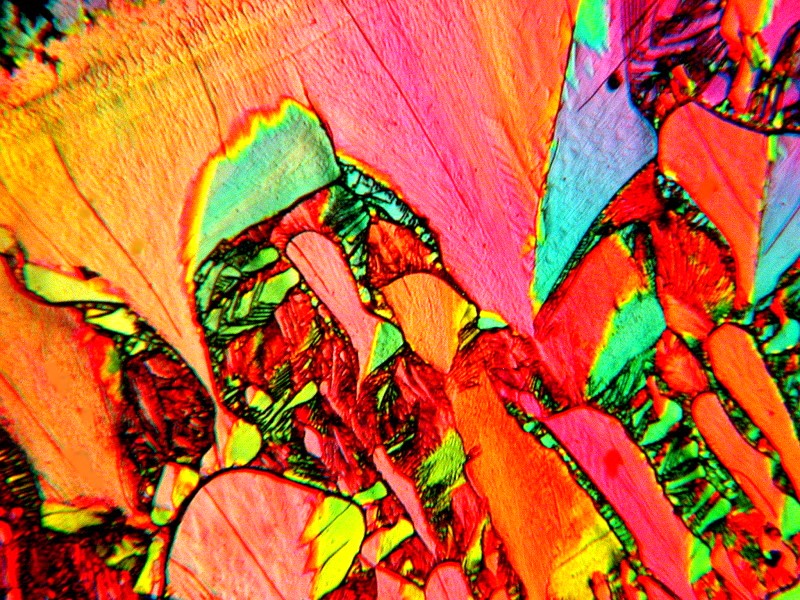Lust, as you already know, is one of the Seven Deadly Sins! Having recognized that I am already guilty of the other six, I figured that one more wouldn’t matter in the cosmic scheme of things.
1) Pride: I take pride in having lived to be 80 and in having, over the years, lured a few students into learning how to think critically and a few others into exploring microscopy.
2) Greed: I was never particularly greedy until, in the last couple of decades, I began hearing about billionaires. This is indeed deadly, for imagine being able to afford almost anything one wants except world peace, love, genuine friendship, respect, loyalty, trust and a few other trivia of this sort. I suppose some misguided soul might consider philanthropy. Imagine you are worth 7 billion dollars. Estimates are that the present human population is also about 7 billion which means you could give $1 dollar to each person on the planet, leaving you with one dollar for yourself. Somehow, I don’t see that happening so, welcome to the IGC (the International Greed Club).
3) Envy: Well, we’re not billionaires, so I suppose we can start by envying them. Or we might envy couples who seem to have a warm satisfying relationship; something not easy to achieve. And, if we are petty, we might wish good things for ourselves at the expense of those acquaintances that we don’t really like so much. Or you might envy your neighbor’s Rolls-Royce as you wave to him every morning from your Mini-Cooper on your drive to work.
4) Gluttony: Guilty as charged! I love fine food, wine, and Scotch, Bourbon, Gin, Vodka, Cognac, etc. Yes, I’m overweight which has the virtue at my advance age of allowing me, if I fall, to simply bounce instead of breaking bones.
5) Wrath: At the University, I was well-known for my caustic, vituperative letters written mostly to bumbling administrators. To paraphrase Shakespeare: “Hell hath no fury like an academic scorned.”
6) Sloth: I have been lazy for as long as I can remember and my preferred activity is day-dreaming. I detest exerting myself and have never had any interest in sports or physical exertion of any sort. Why write a book when you can read one or, better yet, when you can buy a CD on which someone reads a book to you? Why undergo the rigors and frustrations and extraordinary demands of time and discipline to learn to play the piano when you can buy recordings by pianists who far exceed anything you will ever be able to achieve? Perhaps I could learn to splash paint on a canvas like the (con) artists such as Jackson Pollack, but then I’d have to buy paints, canvas, stretchers, turpentine, and God know what other kinds of smelly stuff. Walking around museums is tiring, so I just lean back and watch splendid TV specials on various artists. My motto: No pain, no pain!
And now we come to that special Deadly Sin:
7) Lust: Usually lust is associated with extreme eroticism and sexuality but, from my point of view, those are trivial aspects. Genuine lust is, after all, centered in the psyche and does not necessarily have anything to do with tumescence. There are those who lust for power; that to me is also boring. The objects of my passion are fine microscopes, ones that can be used rather than simply put on display. Over a period of many years, I have indulged my passion and managed through good fortune to acquire 12 fine instruments. They are all used; I have never bought a new instrument because of the issues of budget and the extreme depreciation factor associated with optical equipment. Why, you might ask, do you need anything beyond a good stereo-microscope and a good compound microscope? And, were I feeling flippant, I might reply that that is the nature of lust. An e-friend of mine was, a couple of years ago, cataloging his microscopes and he was at his 75th instrument when he had a stroke and was unable to finish his inventory. He just gave me the vague, general impression that there were quite a few more. My lust is not quite so idle. I wouldn’t want so many and have them sit unused. Mine is an active lust; I want to be able to use what I have on a fairly regular basis.
Well, those 12 must have cost a small fortune–well, yes and no. For medical reasons, I can no longer drive, but if I could, I would want a good-sized SUV for travel and pond collecting expeditions. Such a vehicle now costs as much as I have invested in those 12 microscopes, so, no I don’t feel defensive, especially since each one carries out different, if sometimes, overlapping functions.
I have a camera attached to 6 of the microscopes, in each case, a Nikon Coolpix 995. This was my first digital camera and I found it fairly straightforward to use and I have been pleased with images it produces. As a consequence, I have stayed with it even though I know that there are newer cameras with all kinds of “improvements”. Originally, this camera sold for about $900, but I managed to acquire it for $500 and since have bought several for less than $100. On the large Nikon stereo that is tethered to a laptop computer, I have a Jenoptik high resolution camera, so if I feel that Coolpix is not quite adequate, I can use it, but I rarely do.
Spike Walker and I share a passion for older, classical, very large microscopes.
Fortunately, at least that’s my wife’s view, I no longer have room to accommodate any more large instruments. However, there may be one exception which I’ll tell you about a bit later–IF you promise not to tell my wife. Spike has a Zeiss Axiomat, which was a fascinating modular experiment on the part of Zeiss and which was not entirely successful. Nevertheless, in spite of its shortcomings, I have an atavistic attraction to such outré instruments.
I also lust after a Zeiss Ultraphot III and it happens that there is one up for sale on eBay which comes with a table containing transformers and drawers for accessories and which crated for shipping weight is a staggering 790 pounds. So, if you buy this recruit your friends, relatives, neighbors, and the local football team to help you move it.
I also have a passion for another instrument that only weighs (for shipping) 313 pounds. This is the Olympus Vanox will all kinds of elaborate circuitry and lots of buttons. Another microscope with some significant flaws, but nevertheless lovely to fantasize about.
And then there is the Reichert Univar, another enormous instrument and virtually unobtainable these days. It does quite literally require at least three people to move one.
Such instruments, though lovely to contemplate, are not, these days, very practical. They were all designed with film cameras built-in or as accessories. It is possible to have modifications made to accommodate digital cameras. However, this can be rather expensive and there may be better ways to utilize your resources.
I told you that I have a secret plan to perhaps acquire one more microscope system. I have 3 microscopes that can be used for fluorescence microscopy; however, I have always been rather uncomfortable with the traditional system that uses high pressure mercury vapor lamps. It takes a half hour or so for them to heat up satisfactorily for use and they have a rather limited observation life of about 400 hours which one must track carefully. Beyond that limit, there is the possibility that the bulb may explode creating a right nasty ness. However, recently, I have learned about LED fluorescence systems which are quite appealing. They don’t require time to “heat up” and, in fact, they generate almost no heat unlike the mercury-vapor or xenon bulbs. The refinements that have been developed make them highly desirable in that the results are very good compared with traditional fluorescent systems. Can I find room for it? Problem: we are in the process of moving to a house that is only 1/3rd the size of our present one. We shall see. Most of my friends are betting that somehow, I will find space for such a desirable instrument. However, the combination of less space and health problems now makes such an acquisition unlikely. However, just between you and me, I may yet make it happen and if I do I’ll let you know and share some of its images with you.
The question remains why I have so many different instruments. For me, a stereo is crucial and 75% of the time my examination of a specimen begins at this level. One Olympus SZ-Tr (Stereo Zoom Trinocular) is usually my first instrument of choice. I generally have it fitted out with 20x oculars so that the zoom range is 14x to 80x. For large specimens and for photomacrography, I have a second Olympus SZ-Tr which is on a large and very versatile boom stand. For critical, stereo observation I use a Nikon SZM-1000 which has 3 filters and a provision for oblique illumination built into the base. The optics on this microscope are superb, the objective is an apochromat. For higher magnification critical stereo microscopy, I have a wonderful Leitz Greenough which can magnify up to 240x and gives superb images, but requires very precise adjustment and specimen preparation.
Next, compound microscopes: For standard brightfield, phase, and epi-fluorescence microscopy, I generally use my Zeiss Universal. This is an instrument which I use almost exclusively for phase and almost never use for photomicrography. The photo tube and camera extend the height in such a manner that one needs to be a giraffe to use it comfortably and other instruments offer me better optics. When everything is properly aligned, phase on the instrument is very good.
I said earlier that I didn’t use traditional fluorescence systems; the blue-violet, epi-fluorescence on the Zeiss Universal is the exception. First of all, it uses Halogen illumination rather than mercury vapor. Although it is limited in its range, it can produce some fine results. I am quite fond of the auto-fluorescence as produced by desmids and other algae. The green chloroplasts show up as bright red under epi-fluorescence. It also responds brilliantly to Acridine Orange (one of my favorite fluorochromes). I use an extremely dilute solution which one may sometimes use as a very short-term “vital” stain and observe some living, glowing beasties swimming around. Acridine Orange is also a mutagen and adding very small amounts to a culture of Lacrymaria olor, I was able to produce some mutants with 3 necks and 3 heads actively feeding. Just call me Dr. Frankenstone.
I have a Wild-Heerbrugg Inverted Phase Microscope. My friend Mike Shappell and I used this to examine some specimens of a fascinating Heliozoan, Gromia which when actively feeding extends its pseudopodia beyond its lorica to such an extent that even at low magnifications, the ends of them may be out of the field of view.
What Mike and I observed was, to us, quite astonishing. The protoplasm in a pseudopodium seems to be sticky and when it encounters a diatom or other morsel, it will “capture” it and then withdraw the pseudopodium back into its lorica. However, most amazingly, as we examined the pseudopodia, we discovered a 2-lane highway, that is, protoplasm was flowing in 2 directions at once–one stream flowing outward, the second flowing back to the lorica with small diatoms and tiny bits of unidentifiable particles adhering. Both of us were stunned by this phenomenon. So, it is still possible for amateurs to find extraordinary things which few have observed.
For the inverted microscope, I took some small Petri dishes (60mm) with tight fitting lids and cut holes in the bottoms and then glued them inside over the hole. The cover glasses are 1.5 in thickness which is the most optically desirable for this purpose. Put a sample from a culture in the dish, put on the cover and you have a miniature aquarium. You can vary the area available for observation by selecting the size of the covers glass and the hole size while you cut in the bottom. A 22 mm square or 22 mm round are both quite desirable and one can go as large as 24x50 mm. For more information on how to make these mini-aquaria, you can read the article I wrote some years ago.
At one point, when I was working exclusively on pond life and what turned out to be a rather extended project on the ciliate protozoan, Lacrymaria olor, I set up my Reichert Zetopan with a color video camera to record several hundred hours on VHS video tapes. Although I still have the Zetopan, the camera and large color video monitor are now in the possession of a local underpaid but, nonetheless, award winning science teacher. She is utterly devoted to her students and I’m sure will make excellent use of the equipment.
And now, a brief paean to the Reichert Zetopan. These classic microscopes are of Austrian manufacture and are marvels of precision engineering. For their time, their modular systems were outstanding and of the very highest quality. The range of accessories is most impressive and the modular character of the instrument made it exceptionally attractive to researchers. With appropriate attachments, one can do everything from brightfield to phase contrast, incident metallurgical, polarized, Rheinberg, fluorescence, incident fluorescence, incident polarized, Nomarski Differential Interference Contrast, and more. From what I heard, Reichert fell victim to its own success by building such finely-crafted instruments and refusing to compromise on the quality. As a consequence, they were unable to keep up with the demand and were eventually bought out by Leica under its subsidiary, having also bought American Optical. So, I own a second Reichert microscope under the name of American Optical Ultrastar which is marked in Europe as Reichert Polyvar. I use it primarily for Nomarski DIC, but also for brightfield, polarization and phase contrast. I had a small modification done to it so that it could accommodate a Nikon Coolpix 995 camera.
A few years ago, I acquired a dedicated Zeiss polarizing microscope with wonderful accessories, the most impressive of which is a quartz rotary polarizer. It gave superb results. Here are eight samples.

A nice example of Ascorbic Acid.

Ascorbic Acid mixed with Indigo Carmine

Ascorbic Acid, Metformin (a diabetes medication), and Vanillin

Ascorbic Acid, Prozac, and Sanafitil (an anti-fungal agent)

Ferric Ammonium Sulfate

Urea plus Nickel Sulfate

Sodium Bicarbonate plus Water Glass (an old-fashioned egg preservative)

Nickel Sulfate plus Urea
By now I’m sure you see a pattern emerging; namely, that I like to have instruments that are more or less dedicated to 1 or 2 special techniques. For that reason, I bought an A/O and had a condenser modified and use it almost exclusively for Rheinberg and oblique illuminations. These techniques are marvelously challenging and frustrating. They can give stunning results, but they require patience and constant tweaking. I also got a small Olympus with modified lenses and condenser for Hoffman Modulation Contrast and as yet have been unable to spend much time with it, although I hope to change that soon.
All of the instruments are used, but in first-class condition and were acquired over a period of a bit more than 40 years. Good microscopes when treated well last and last, and over that 40 years, as I mentioned previously, I spent less than one would now pay for a quality automobile and I have had much more enjoyment and enlightenment from my microscopes than I could ever get from a vehicle!
All comments to the author Richard Howey are welcomed.
Editor's note: Visit Richard Howey's new website at http://rhowey.googlepages.com/home where he plans to share aspects of his wide interests.
Microscopy UK Front
Page
Micscape
Magazine
Article
Library
© Microscopy UK or their contributors.
Published in the March 2019 edition of Micscape Magazine.
Please report any Web problems or offer general comments to the Micscape Editor .
Micscape is the on-line monthly magazine of the Microscopy UK website at Microscopy-UK .
©
Onview.net Ltd, Microscopy-UK, and all contributors 1995
onwards. All rights reserved.
Main site is at
www.microscopy-uk.org.uk .